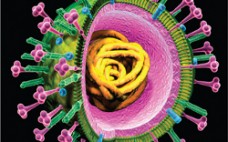Vaccines are among biotechnological products characterized by continuous growth over the past decade. According to a 2011 report, the global vaccine market is expected to reach US$34 billion in sales by 2013 (1). Much development can be ascribed to vaccine treatments for cancer, autoimmune, and infectious diseases (which have risen significantly) as well as the growing worldwide population and emergence of new pandemics. Although to date the main health impact of vaccines is still in disease prevention, the…
Upstream Processing
Scaling Up Stem Cells
Cell-based products are becoming increasingly important as potential biotherapies. Cell therapy is predicted to have a huge impact on the healthcare sector over the coming decades. Stem cells, in particular, are investigated as potential treatments for a diverse range of applications (such as heart disease and metabolic and inflammatory disorders) in which they might be used to restore lost biological functions. The cell therapy industry is starting to mature. Several emerging companies are now supporting late-stage clinical trials,…
Strategies for Rapid Production of Therapeutic Proteins in Mammalian Cells
It is estimated that hundreds of new recombinant proteins and monoclonal antibodies (MAbs) enter preclinical and clinical development each year (1, 2). Concomitant global competition in biologics manufacturing has put immense pressure to shorten the time to market. Over the years, cells from various origins have been used for therapeutic protein production (2, 3,–5). One of the most economical choices is Escherichia coli, used to make proteins such as human insulin and growth hormone. But the bacteria have some serious…
Method for Preserving Cell Density and Viability in Two-Phase Fed-Batch CHO Culture
Risk of cell-culture contamination is a common concern whenever materials are added to or removed from a bioreactor. It is essential to maintain a sterile barrier and provide containment against intruding organisms during such operations. Many R&D and pilot-scale manufacturing tasks involve flexible, single-use processes with presterilized containment systems in nonclassified laboratory areas. Here, we examine a process that requires substantial manipulation of a culture — first completely removing and later returning the culture to a bioreactor during media exchange…
Balancing the Statistical Tightrope
During one development meeting early in my industrial career, a process development group member asked me whether the value my group had reported in one result was okay to use. I confidently replied “Yes, it’s fine. It’s about 40, somewhere between 38 and 42. The other person raised his eyebrows. “About 40?” In response, I somewhat awkwardly mumbled “Yes, probably…about that” — an answer not met with full understanding, but rather concern. My answer hadn’t been incorrect. The result was…
Fed-Batch Cell Culture Process Optimization
Most biopharmaceutical production platforms are based on fed-batch cell culture protocols, which can support high volumetric productivity while maintaining low operational complexity (1). The industry is interested in developing or refining high-titer cell culture processes to meet increasing market demands and reduce manufacturing costs (2). Although advancements in cell engineering have enabled development of high-performing recombinant cell lines (3,4,5,6), improvements in cell culture media and process parameter settings are required to realize the maximum production potentials of those cells (7,–8).…
Measuring kLa for Better Bioreactor Performance
Knowledge of kLa (the volumetric mass-transfer coefficient that describes the efficiency with which oxygen can be delivered to a bioreactor for a given set of operating conditions) is not new. Here I provide information for those who are unfamiliar with the measurement method and/or issues that must be considered when making these measurements. Advances in this area now make it advisable to run kLa measurements routinely in many bioprocesses. The Importance of Measuring kLa Before examining the process theory and…
Upstream Single-Use Bioprocessing Systems
Single-use bioprocessing equipment has become well-accepted technology in a relatively short time. Disposable devices and components have created market niches and new segments that continue to evolve. In this dynamic environment, it is difficult to measure acceptance or assess market growth. Here we project the world market for cell culture single-use systems (SUS) as well as problems affecting that market, including adoption for commercial manufacture. This is based on our 10-year analysis of the industry, with data from our eighth…
Production of CGMP-Grade Lentiviral Vectors
Lentiviral vectors are important tools for gene transfer because of their ability to transduce a number of cell types without the need for host cells to be dividing. As a result, investigators are using them as gene delivery vehicles in clinical applications. Since lentiviral vectors play such a vital role in gene therapy, they need to be manufactured at large scale for clinical trials. But, large-scale production using CGMP methods can present a number of challenges.
To address these challenges, the authors of this case study developed a process that allows for extensive scale-up in a safe, sterile, and reproducible system to produce clinical-grade lentivirus. This manufacturing process is very efficient and can be carried out using minimal staff (two operators for production of each subbatch). It provides the extensive scale-up capacity necessary to produce CGMP-grade lentivirus, and it has been used successfully in several completed and on-going phase 1–2 ex-vivo gene therapy clinical trials.
Development of a Plant-Made Pharmaceutical Production Platform
Since the late 1980s, studies have shown that plants can manufacture functional transgenic pharmaceutical compounds. Advantages attributed to plant-made pharmaceutical (PMP) approaches are compelling, and PMP production continues to attract interest from investors and the biopharmaceutical industry (Table 1). Proposed PMP benefits include proven scalability, high production capacity, limited exposure to human or animal pathogens, lower capital expenditures (CapEx), and decreased operating costs. Those putative advantages have proven to be significant business forces driving continued investor support for PMP ventures.…

